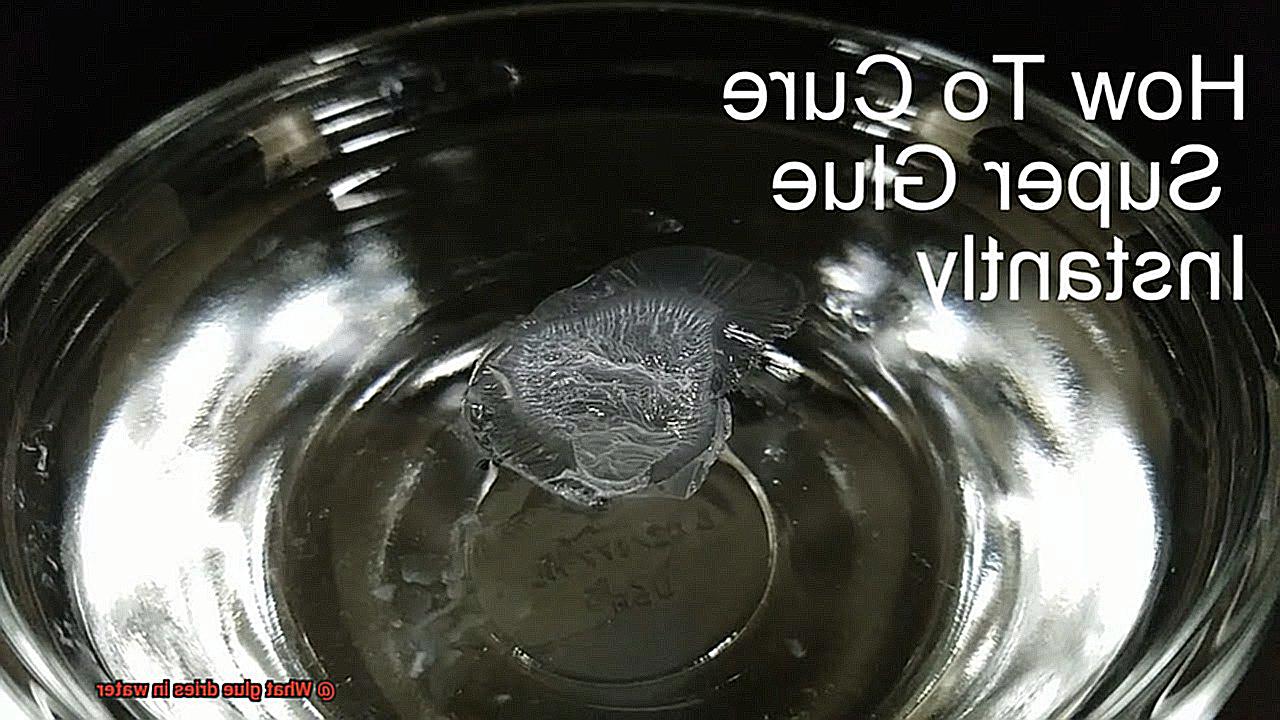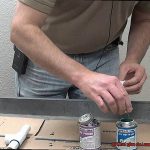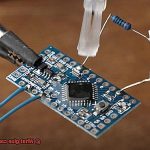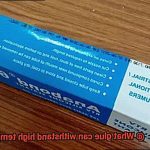Are you stuck in a sticky situation where you need to glue something together but don’t have access to traditional glue? Perhaps you’re working on an exciting craft project with your kids, or maybe you’re fixing a leaky underwater pipe. Either way, you might be wondering what kind of glue dries in water.
The good news is that there are several types of water-resistant glue available. Water-based glue is a popular option for school projects and paper crafts. This non-toxic adhesive is easy to clean up and a favorite among parents and teachers alike.
If you need something stronger than water-based glue, epoxy resin is your go-to adhesive. This heavy-duty glue is often used in construction projects and can repair leaks in pipes and other underwater surfaces.
For those who require a super-strong bond, cyanoacrylate glue, also known as super glue, can dry in water too. This quick-setting adhesive can fix broken ceramics or attach metal to wood.
With so many options available, whether you’re working on a fun DIY project with your kids or fixing an urgent plumbing issue, there’s always a suitable type of glue that will dry in water. Just remember to choose the right one for your specific needs.
What is PVA Glue?
Contents
PVA Glue, also known as polyvinyl acetate, is a water-based adhesive that has become a staple in the world of crafting, woodworking, and more. This versatile adhesive is known for its ease of use, non-toxicity, and clear drying properties that make it an ideal choice for many applications.
PVA glue is created by mixing polyvinyl acetate with water and other ingredients such as plasticizers, thickeners, or preservatives. This mixture results in an emulsion with a milky appearance and neutral pH. When applied to surfaces, the water evaporates, and the polyvinyl acetate molecules cross-link with each other to create a strong and flexible bond.
One of the most significant benefits of PVA glue is its non-toxicity. This makes it an excellent choice for schools and homes where children are present. Additionally, PVA glue is easy to clean up with water before it dries, making it perfect for messy projects.
PVA glue is best suited for porous materials such as paper, cardboard, wood, and fabric. It may not be the best choice for non-porous materials such as metal or plastic. However, PVA glue has many practical applications beyond crafts.
In woodworking, PVA glue is often used for edge-gluing boards or laminating veneers because it forms a strong bond that dries clear. Bookbinding also sees frequent use of PVA glue to attach endpapers to book covers or to make spine linings. When labeling bottles, applying a thin film of PVA glue creates a strong bond that sticks even when wet. Lastly, repairing ceramics can be accomplished by using PVA glue to fill cracks or reinforce fragile areas.
Advantages of Using PVA Glue
PVA glue, also known as Polyvinyl Acetate glue, is a game-changer in the world of adhesives. This popular adhesive dries in water and has become an essential tool in various industries, including woodworking, paper crafts, and even the creation of artificial nails. So what makes PVA glue stand out among other types of glues? Let’s take a closer look at its numerous advantages.
Strong bonding capabilities are one of the most significant advantages of PVA glue. When applied correctly, it creates a bond that is durable and long-lasting, making it an ideal choice for woodworking projects. The strong bond ensures the stability and longevity of the finished product, satisfying even the most demanding projects.
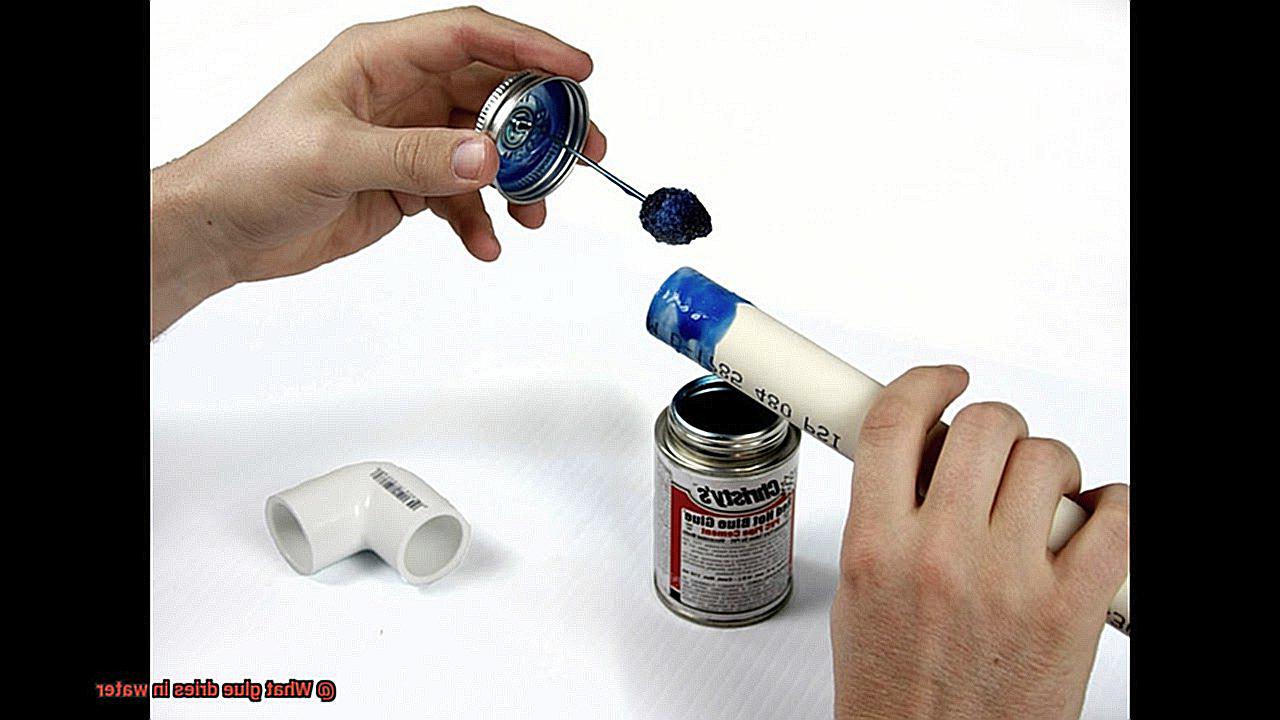
The versatility of PVA glue is another standout feature. It can be used on a wide range of surfaces such as paper, cardboard, fabric, wood, and some plastics. This makes it a top choice for various crafting projects where different materials need to be bonded together.

PVA glue is also non-toxic and safe to use, making it an excellent option for children’s crafts. It doesn’t emit any harmful fumes or odors and can easily be cleaned up with water, making it easy to use and handle.
Another significant advantage of PVA glue is its clear drying properties. It dries clear, making it perfect for applications where aesthetics are important. It doesn’t leave any residue or discoloration on the surface it’s applied to, resulting in a clean and professional-looking finish.
In summary, PVA glue offers numerous advantages over other types of glues due to its strong bonding capabilities, versatility, safety, and clear drying properties. Its widespread use in various industries is a testament to its effectiveness and reliability as an adhesive.
How to Use PVA Glue
PVA glue, also known as white glue or school glue, is a popular adhesive that dries clear and is easy to use. It is water-based, which means it can easily be thinned with water and cleaned up with soap and water while it is still wet. Here’s a more detailed explanation of how to use PVA glue:
Prepare Your Workspace
Before using PVA glue, make sure your workspace is clean and dry. This will ensure that the glue adheres properly to the surface you are working on. Also, make sure you have all the necessary tools and materials for your project laid out and within reach.
Apply the Glue
Next, apply a thin layer of PVA glue to one of the surfaces you will be bonding together. You can use a brush or spreader to apply the glue evenly. It’s important not to use too much glue, as this can cause the bond to weaken or take longer to dry.
Press the Surfaces Together
Once you have applied the glue, press the two surfaces firmly together and hold them in place for a few seconds. If you are gluing large or heavy objects, you may need to use clamps or other tools to hold them in place while the glue dries. If you’re working with paper or cardboard, use a roller or your hands to smooth out any air bubbles and ensure a strong bond.
Wait for it to Dry
PVA glue may take anywhere from 30 minutes to 24 hours to fully dry, depending on the thickness of the glue and the materials being used. Avoid moving or disturbing the glued surfaces until the glue has completely dried. If you’re unsure if the glue is completely dry, wait a little longer just to be safe.
Clean Up
After using PVA glue, clean up any excess with a damp cloth or sponge before it dries. Once it has dried, it can be difficult to remove without damaging the surface. If you accidentally get glue on your skin or clothing, wash it off immediately with soap and water.
What is Cyanoacrylate Glue?
Cyanoacrylate glue, also known as superglue is here to save the day.
This adhesive is a game-changer with its unique ability to dry quickly and form a strong bond. It’s no wonder it’s commonly used in a variety of applications, including woodworking, metalworking, and even in the medical field for wound closure.
What sets cyanoacrylate glue apart from other adhesives is its remarkable property of drying in the presence of water. This makes it an ideal choice for projects that may be exposed to moisture or water, such as boat repairs or outdoor furniture.
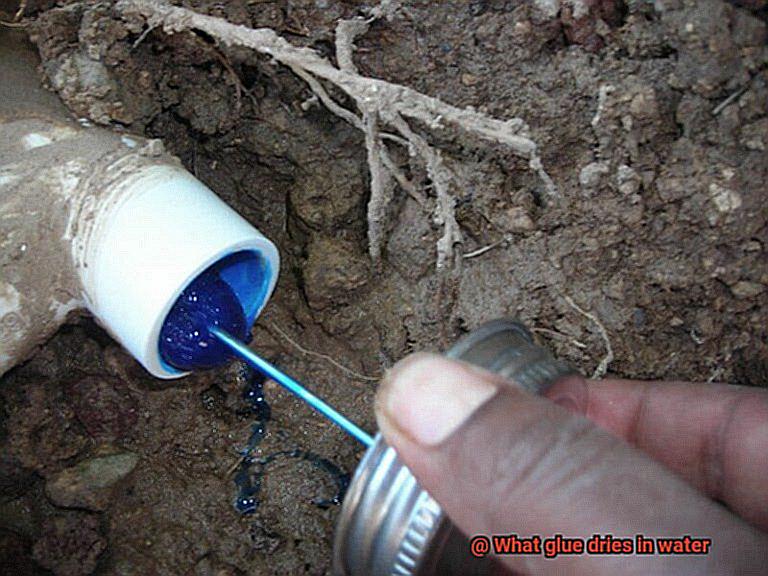
When cyanoacrylate glue comes into contact with water, it undergoes a chemical reaction that causes it to harden and solidify. This process can occur rapidly, resulting in a strong and durable bond that can withstand exposure to water and other harsh environments.
However, it’s important to note that cyanoacrylate glue should not be used on surfaces that are constantly submerged in water as it may weaken over time. But for projects that require a strong bond in the presence of moisture or water, cyanoacrylate glue is an excellent choice.
Advantages of Using Cyanoacrylate Glue
If you’re tired of using adhesives that take forever to dry and don’t provide a strong hold, then you should consider using cyanoacrylate glue, also known as super glue. This adhesive has numerous advantages that make it an excellent choice for any project.
Firstly, one of the main advantages of using cyanoacrylate glue is its ability to bond almost any material. Whether it’s wood, metal, plastic, or ceramics – this all-purpose adhesive can handle it all. This versatility makes it perfect for repairing household items or industrial equipment.
Another great advantage of using cyanoacrylate glue is its ability to withstand water and moisture. It’s perfect for use in wet environments or for projects where water exposure is expected. So, if you’re planning on fixing your boat or outdoor furniture, this adhesive is the perfect choice. However, it’s important to note that cyanoacrylate glue may weaken over time if constantly submerged in water.
Cyanoacrylate glue is also incredibly easy to use. It comes in various forms such as tubes, bottles, and pens, making it easy to apply directly to the surfaces that need to be bonded without any mess or fuss. And the best part? It sets quickly within seconds, so there’s no need to wait for extended periods for it to dry.
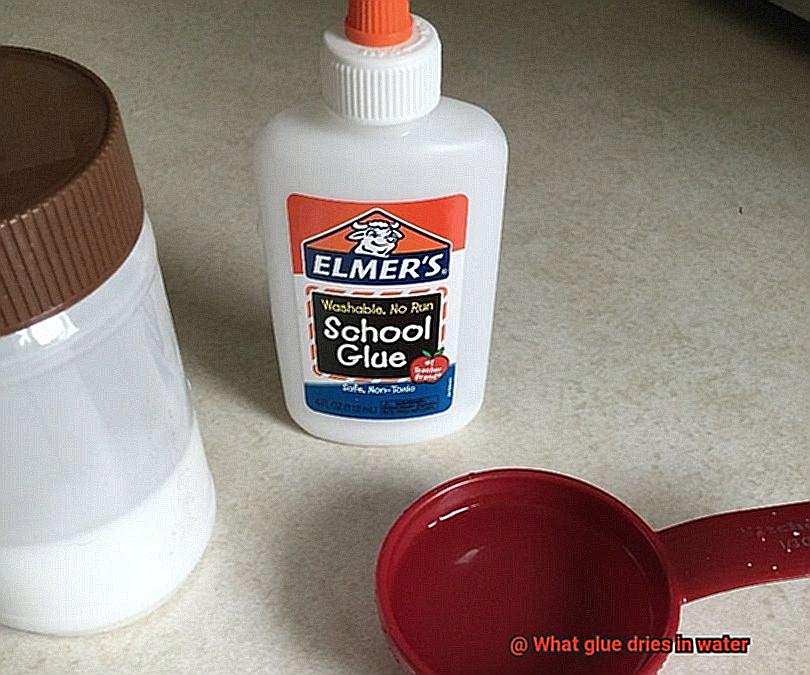
Finally, cyanoacrylate glue creates a strong bond that can withstand even high-stress environments. Once cured, it forms a rigid and durable bond that won’t break easily. This strength makes it ideal for use in manufacturing and industrial applications where strength is crucial.
How to Use Cyanoacrylate Glue
Cyanoacrylate glue, commonly known as super glue, is a versatile adhesive that can be used for a variety of projects. With its fast-drying and strong bonding capabilities, it has become a popular choice for DIY enthusiasts and professionals alike. In this guide, we will explore how to use cyanoacrylate glue effectively.
Clean the Surfaces
The first step in using cyanoacrylate glue is to ensure that the surfaces you want to bond are clean and dry. Any dust, debris or moisture on the surface can weaken the bond. Use a clean cloth or alcohol-based cleaner to wipe away any impurities before applying the glue.
Apply the Glue
With a steady hand, apply a small amount of cyanoacrylate glue to one of the surfaces. It is essential to use only a small amount of glue as excess glue can cause a messy appearance. Also, make sure you do not get any glue on your skin.
Press Together Firmly
Press the two surfaces together firmly for several seconds until the bond starts to set. Avoid moving or jostling the bonded surfaces during this time, as it may weaken or break the bond. The bond will fully cure within several hours.
Removing Super Glue from Skin
Cyanoacrylate glue can bond skin together if it comes into contact with it. If this happens, do not pull the skin apart as this can cause injury. Instead, soak the affected area in warm soapy water and gently pry the skin apart with a tool such as a credit card. You can also use acetone or nail polish remover to dissolve the glue.
Store Properly
To prolong its shelf life, keep the cap tightly closed when not in use and store it in a cool and dry place.
What are Specialty Glues?
Specialty glues are the superheroes of the adhesive world. They are designed to bond specific materials or surfaces, making them more effective than regular adhesives in certain situations. These glues have unique properties and compositions that make them ideal for unique applications.
There are several types of specialty glues available on the market, each with its own set of strengths and weaknesses. Let’s explore some of the most popular ones.
First up, we have water-based glues or PVA glue. This type is perfect for crafts, woodworking, and paper projects because it dries clear and remains flexible after drying. It’s also non-toxic and easy to clean up, making it a favorite among craft enthusiasts.
Next, we have cyanoacrylate glue or superglue. This adhesive is the go-to for bonding non-porous materials such as metal and plastic. Superglue dries quickly and forms a strong bond that resists water and heat. It’s perfect for those small DIY projects that require a quick fix.
Epoxy glue is another specialty glue that is commonly used for bonding metal, glass, and ceramic surfaces. It consists of two parts – a resin and a hardener – which are mixed together before application. Epoxy glue forms an incredibly strong and durable bond that can withstand extreme temperatures and harsh chemicals.
But wait, there’s more. Specialty adhesives are also available for specific applications such as automotive repair, construction, and electronics. These adhesives are formulated to provide superior bonding strength and resistance to environmental factors such as heat, moisture, and vibration. For example, if you need to repair your car’s bumper or windshield, you’ll want to use a specialty adhesive designed specifically for automotive repair.
Advantages of Using Specialty Glues
When it comes to adhesive solutions, specialty glues that dry in water are the go-to for achieving a strong and durable bond. Unlike regular glue, specialty glues are designed to meet specific needs and requirements that other adhesives cannot fulfill. They are formulated to work on different materials and substrates, providing a reliable bond that can withstand various environmental conditions.
One of the biggest advantages of using specialty glues is their safety. These glues are non-toxic and safe for use around children and pets, making them ideal for craft projects and other applications where safety is paramount. Unlike solvent-based adhesives, specialty glues do not emit harmful fumes or require special ventilation, making them more environmentally friendly.
Aside from their safety, specialty glues also offer versatility like no other adhesive can. They can be used on a wide range of surfaces, including wood, paper, fabric, and even certain plastics. This makes them perfect for a variety of applications such as bookbinding, scrapbooking, woodworking, and more. Plus, they offer a strong bond that can withstand moisture and humidity- crucial for projects that will be exposed to water or high humidity levels.
Specialty glues also provide improved performance over regular glue. They are specifically designed to bond different materials together and provide a more durable and long-lasting bond than standard white glue. This is because they contain additives that enhance their strength and flexibility, making them perfect for applications where high performance is required.
Moreover, specialty glues come in various formulations such as fast-drying or slow-drying options, allowing you to choose the right adhesive for your project’s needs. Some specialty glues even offer unique features such as UV resistance or color-changing properties that can add an extra level of functionality to your project.
Also Read: Is Super Glue Waterproof? – Glue Things
Conclusion
In conclusion, the world of glue offers a wide range of options for those seeking an adhesive that dries in water. Whether you’re a student working on a school project or a DIY enthusiast tackling construction work, there’s a glue out there for every occasion.
Water-based glue is perfect for paper crafts and other similar projects. It’s easy to use and dries quickly, making it the go-to choice for many. Epoxy resin, on the other hand, is ideal for more heavy-duty tasks such as repairing leaks in pipes or other underwater surfaces.
If you’re looking for an adhesive that can bond ceramics or attach metal to wood, cyanoacrylate glue (also known as superglue) is your best bet. This versatile glue also dries in water, making it a reliable option for any project.
PVA glue (white glue or school glue) is another popular choice due to its clear drying properties and strong bonding capabilities. It works well with porous materials like paper, cardboard, wood, and fabric.
For those seeking even more specialized options, specialty glues are available in various formulations such as fast-drying or slow-drying options with unique features like UV resistance or color-changing properties.
No matter what task you’re undertaking, choosing the right type of glue that will dry in water is essential.

